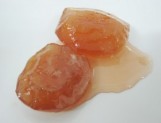
Tallet corner with the arms of the da Costa family
Historically the tallet was most commonly made of wool or linen, and to this day in many orthodox Ashkenazi and Eastern Sephardi communities, wool remains the fabric of choice, mainly due to an opinion that only these two materials fulfill the original Torah command (others being only a rabbinical addition).
However, in Western Sephardi and Italian communities with access to the silk route luxuriant, lightweight silk tallets became the tradition, as a way of honouring and beautifying the mitzvah.
These silk tallets were often personalized for their owners with elaborately decorated squares at each corner, emphasizing the four fringes.








 Rabbi Simon Schwab (1908-95), sion of Hirsch’s “Torah and Derekh Eretz” Community in Frankfurt, and leader of Khal Adath Jeshurun in Washington Heights, USA, composed a moving Elegy on the tragedy of the Holocaust, for inclusion among the others traditionally chanted on the Fast of Av, the saddest day of the Jewish Year.
Rabbi Simon Schwab (1908-95), sion of Hirsch’s “Torah and Derekh Eretz” Community in Frankfurt, and leader of Khal Adath Jeshurun in Washington Heights, USA, composed a moving Elegy on the tragedy of the Holocaust, for inclusion among the others traditionally chanted on the Fast of Av, the saddest day of the Jewish Year.